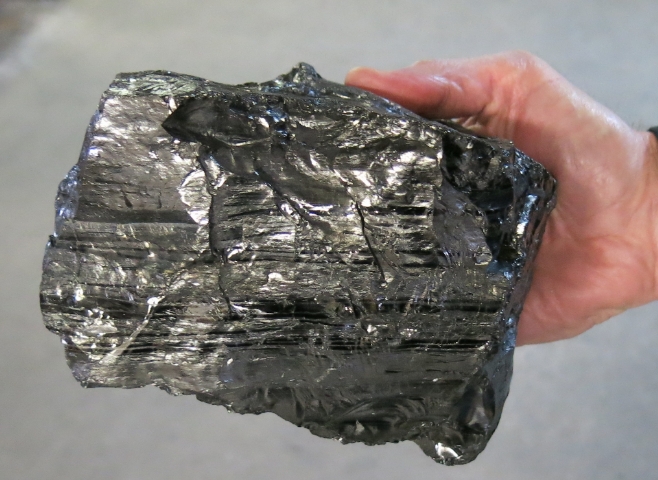
The media filtering system is the key component in municipal water treatment to get drinking water of highest quality. Anthracite carbon is a key component for these systems.
HRTEM, EDS mapping and CHEM anthracite samples demonstrated that RAW anthracite's impurities affected the intercalation of Na-ion in RAW. However, heating for 6 hours successfully eliminated these impurities and boosted the intercalation ability.

The hard, compact variety of anthracite coal has many beneficial qualities. Water filtration is made easier by its dense structure. When used in conjunction with sand, it helps municipal filters need less back washing and experience lower head loss, while providing better treatment results than singular sand filters.
This FTIR study was a useful tool to better understand the anthracite sample's structural characteristics and its molecular models. The macromolecular carbons of anthracite showed a very high level of condensation. They also had low levels of fatty side chains or oxygen-containing groups.
The anthracite has some characteristics which make it unique. One of these is the fact that it burns cleaner and produces less harmful gases when combusted. It also provides homeowners with a much lower energy cost than other alternatives like wood pellets. This characteristic can help homeowners save thousands of dollars over time.
Unlike bituminous coal, anthracite possesses a hard, black surface that emits a blue smoke-free flame when burned. Thermal conductivity of anthracite is higher than bituminous coke.
The highest-grade and ultra-high-grade anthracites have the greatest carbon and energy contents, and the fewest impurities in terms of moisture, volatiles, and ash. KOH activated anthracite exhibits significant reductions to the Si and Al content, two primary ash constituents found in anthracite.
The physical properties of anthracite translate to substantial savings for municipalities who utilize gravity sand treatment systems. Using anthracite media reduces back washing, lowers head loss, and enables them to run their filtration systems at less than half the optimum design flow rate. Municipalities can save on both capital and operation costs. Particularly if the granular alumina has a very low specific gravity. The specific gravity controls particle distribution as well as the intermixing of anthracite with sand.
Information about organic carbon in coal is crucial for a more efficient transformation and utilization of the coal resource. The unique molecular and coalifying characteristics of Anthracite make it an ideal coal for energy production.
X-ray photoelectron spectroscopy is a versatile technique that can detect elements in coal and its microstructure. With its high sensitivity, we can determine the amount of sulfur, silicon, carbon, and oxygen in coal.
Upon activation by KOH anthracite produces carbon flakes with a significant amount of graphene separated layers. This allows it to be used as a replacement for more expensive nanocarbon fillers in epoxy resins, and also improves the mechanical properties of these resins. The reduction of hazardous gasses during casting is also a major benefit. Anthracite HG or UHG is used as an alternative to coke for metallurgy processes like sintering, pelletising and pulverized coal injection. Russia, Ukraine Vietnam, and South Africa produce the majority of HG anthracite.
Anthracite can be used in both manual and automatic stoker fireplaces. It is clean-burning, does not produce much smoke and needs less maintenance than the majority of fossil fuels.
Its low sulfur content and relatively high calorific value make it a valuable process carbon for industrial purposes, particularly in the metallurgical industries. Anthracite also makes a highly sought after fuel for the generation of electricity. The high level of energy it offers in an efficient, compact form is a great asset, as are its low moisture levels and low sulfur content.
Anthracite is a porous material that makes filtration of water easier. Municipal drinking water filtration is widely used throughout the US. Studies have shown that angular anthracite performs better in this application than spherical sand because the more angular structure tends to agitate backwash water to dislodge contaminates from the media surface. It is crucial in deep-bed filters with coarse media.

Write a Message